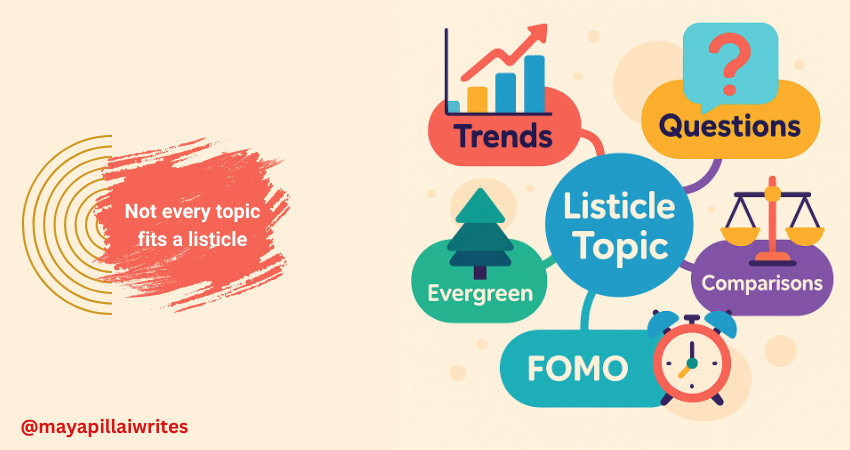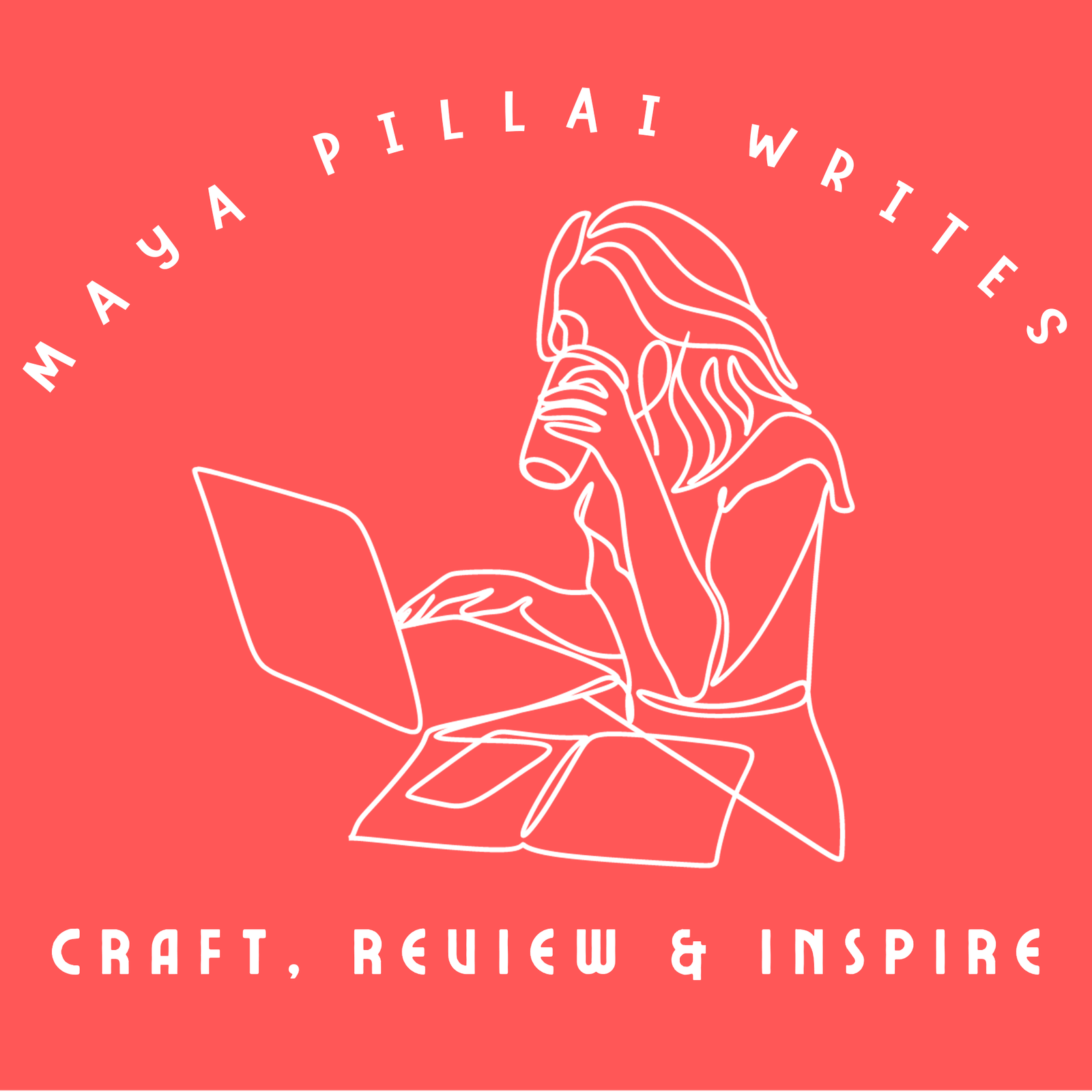Creating listicles is one of the most effective ways to capture attention online, but not every subject makes sense in a numbered format. If you’ve ever wondered how to choose a topic for a listicle, the key lies in audience demand, search intent, and whether your idea can be broken into clear, valuable points.
Table of Contents
ToggleListicles remain popular because they’re scannable, shareable, and rank well in search engines. But in 2025, with AI-driven search (Google SGE, ChatGPT results, and voice queries) influencing visibility, writers need smarter ways to pick the right topics.

TL; DR
The best listicle topics are audience-driven, data-supported, and trend-aware. Choose subjects that can be broken into steps, mistakes, or comparisons, then test them against what people are searching for right now. Titles with numbers, FOMO-driven hooks, or problem-solving angles perform best in search engines and AI summaries.
Key Takeaways
- Great listicle topics are data-driven, trend-aware, and easy to split into points.
- Audience questions and Google SERPs are the best places to find winning ideas.
- FOMO-driven, comparison-based, and mobile-first topics perform especially well.
- Balance evergreen and timely content to maximize reach.
Test titles before writing to confirm demand.
10 Proven Tips for 2025
1. Start With Real Questions From Your Audience
The strongest listicle ideas come directly from what your audience is asking. Instead of brainstorming in isolation, pay attention to recurring questions on platforms like Reddit, Quora, YouTube comments, Slack groups, or niche forums. When the same pain point keeps showing up, that’s your signal.
For example, if multiple users are asking “How do I protect my crypto from AI scams?”, that’s a natural fit for a listicle like “7 Ways to Protect Your Crypto From AI-Powered Scams in 2025.” By starting with questions, you guarantee relevance and avoid generic topics that won’t resonate.
2. Spot FOMO Topics (Fear of Missing Out)
Readers don’t want to fall behind. That’s why listicles around trends, risks, and new opportunities often get more clicks and shares than evergreen content. In fast-moving industries like cybersecurity, marketing, or AI, people scan listicles to quickly catch up on what’s changing.
Example: “10 AI Tools Every Freelancer Should Try in 2025” or “5 Cybersecurity Threats Businesses Aren’t Ready For This Year.” These create urgency, which boosts engagement and SEO performance.
3. Use Search Data, Not Just Intuition
It’s tempting to pick listicle topics based on instinct, but SEO thrives on data. Use tools like:
- Google Trends to spot rising interest.
- AnswerThePublic to identify long-tail, list-friendly questions.
- Google Autocomplete to see what phrases like “best,” “top,” and “ways to” bring up in your niche.
If the first page of Google shows list-based results for your keyword, it’s proof that the listicle format matches search intent.
4. Ask: Can It Be Broken Into “Chunks”?
Not every topic works as a listicle. A strong candidate is one you can break into steps, mistakes, tools, or examples. If the subject can’t be divided neatly, it’s better suited for an essay or thought piece.
✅ Good: “8 Mistakes New Writers Make on LinkedIn.”
❌ Weak: “Why Content Writing Is Important.”
Breaking into chunks makes your post easier to skim, which is both reader-friendly and SEO-friendly.
Read: 10 Things to Know Before Writing a Listicle (With Examples) – mayapillaiwrites.com
5. Think Mobile-First
Over 70% of readers access content on their phones, which means mobile readability is non-negotiable. When choosing a topic, ask: “Would this listicle work as a quick-scroll read?”
✅ Works: “10 Free Grammar Tools Writers Can Use on the Go.”
❌ Doesn’t Work: “History of Grammar Tools.”
Scannable, benefit-driven content performs better in mobile-first indexing and AI search summaries.
6. Focus on Comparison and Decision-Making
Decision-driven queries are where listicles shine. When people search for “best tools,” “top platforms,” or “alternatives to,” they want a quick comparison before making a choice.
Examples:
- “7 Cold Wallets Compared: Which One Should You Use in 2025?”
- “5 Freelance Platforms Writers Can Trust This Year.”
These listicles help readers act quickly — and Google rewards that with higher rankings.
7. Balance Evergreen and Timely Topics
Don’t rely only on trending ideas. A good strategy is to create both:
- Evergreen listicles stay relevant year after year (“10 Simple Tips to Improve Your Writing”).
- Timely listicles capture attention fast but may fade (“5 AI Tools Changing Content Creation in 2025”).
Balancing both ensures you get immediate visibility + long-term search traffic.
8. Add Your Unique Angle Before You Write
The internet is saturated with listicles. What makes yours click-worthy is the angle. Don’t just write “10 Productivity Tools.” Add a differentiator like “Tested by Writers in 2025” or “That Are Actually Free.”
Readers — and search engines — reward originality. Unique angles can also earn backlinks from others who cite your work.
9. Test Your Title Early
Your title is your hook. Before writing, test it on LinkedIn, Twitter, or even a private Slack group. Post two versions of your headline and see which sparks interest.
If “10 SEO Tools for Beginners” gets less traction than “10 SEO Tools That Save Writers Time in 2025”, you know which one to use. This small step ensures your chosen topic has demand.
10. Apply the “Quick Filters” Rule
Before finalizing, run every topic through these quick filters:
- Can it be split into 5–15 clear points?
- Does it solve a problem or answer a trending question?
- Is interest rising on Google Trends?
- Can you frame it with a unique perspective?
- Would you personally click on this headline?
If the answer is yes to most, you’ve found your listicle winner.
To Sum Up
Choosing the right topic for a listicle in 2025 is about balancing audience needs, search demand, and format suitability. A good listicle topic answers real questions, solves a problem, or helps readers make quick decisions. By focusing on data-driven research (Google Trends, autocomplete, AnswerThePublic), spotting FOMO-driven trends, and ensuring your subject can be broken into clear, scannable points, you’ll create listicles that are both SEO-friendly and reader-friendly.
The most successful listicles today combine evergreen relevance with timely hooks, carry unique angles that stand out from generic posts, and are optimized for mobile-first and AI search visibility. When you validate your title early, keep structure consistent, and apply the quick filters, you’ll never waste time on listicles that don’t perform.
In shor,t choose topics that people are already searching for, frame them with your unique angle, and present them in a way that delivers fast, structured value.
Quick FAQs
Q1. How do I choose a topic for a listicle?
Pick topics that solve problems, answer common questions, or compare tools and ideas. Validate them with search data and ensure they can be broken into clear, scannable points.
Q2. What makes a listicle topic good for SEO?
Good listicle topics match search intent. Look for keywords with “best,” “top,” or “ways to.” Use numbers in the title and keep points consistent and parallel.
Q3. Should listicles be evergreen or trend-focused?
Both. Evergreen listicles bring steady traffic, while trend-focused ones capture short-term attention and social shares.
Q4. How long should a listicle be in 2025?
Anywhere between 1,000–1,500 words works best. Long enough to add depth but short enough to skim.
Q5. Do listicles still rank well in Google with AI search?
Yes. Their structured format makes them ideal for featured snippets, “People Also Ask” boxes, and Google SGE summaries.
